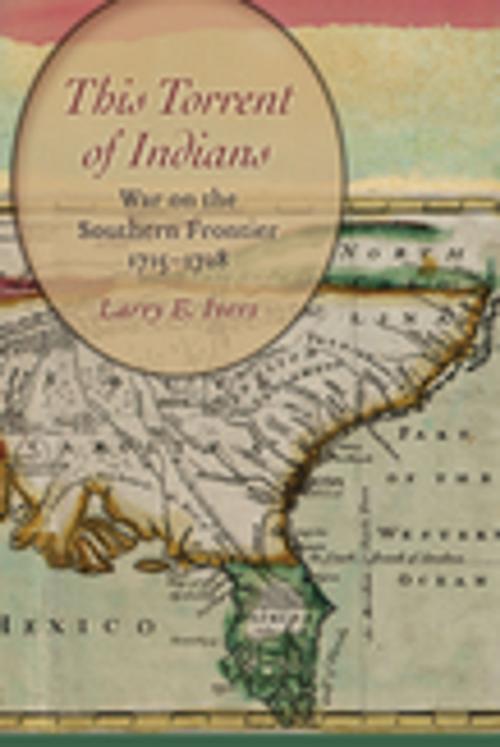This Torrent of Indians
War on the Southern Frontier, 1715-1728
Nonfiction, History, Americas, United States| Author: | Larry E. Ivers | ISBN: | 9781611176070 |
| Publisher: | University of South Carolina Press | Publication: | February 23, 2016 |
| Imprint: | University of South Carolina Press | Language: | English |
| Author: | Larry E. Ivers |
| ISBN: | 9781611176070 |
| Publisher: | University of South Carolina Press |
| Publication: | February 23, 2016 |
| Imprint: | University of South Carolina Press |
| Language: | English |
The southern frontier could be a cruel and unforgiving place during the early eighteenth century. The British colony of South Carolina was in proximity and traded with several Native American groups. The economic and military relationships between the colonialists and natives were always filled with tension but the Good Friday 1715 uprising surprised Carolinians by its swift brutality. Larry E. Ivers examines the ensuing lengthy war in This Torrent of Indians. Named for the Yamasee Indians because they were the first to strike, the war persisted for thirteen years and powerfully influenced colonial American history. While Ivers examines the reasons offered by recent scholars for the outbreak of the war—indebtedness to Anglo-American traders, fear of enslavement, and pernicious land grabbing—he concentrates on the military history of this long war and its impact on all inhabitants of the region: Spanish and British Europeans, African Americans, and most of all, the numerous Indian groups and their allies. Eventually defeated, the Indian tribes withdrew from South Carolina or made peace treaties that left the region ripe for colonial exploitation. Ivers’s detailed narrative and analyses demonstrates the horror and cruelty of a war of survival. The organization, equipment, and tactics used by South Carolinians and Indians were influenced by the differing customs but both sides acted with savage determination to extinguish their foes. Ultimately, it was the individuals behind the tactics that determined the outcomes. Ivers shares stories from both sides of the battlefield—tales of the courageous, faint of heart, inept, and the upstanding. He also includes a detailed account of black and Indian slave soldiers serving with distinction alongside white soldiers in combat. Ivers gives us an original and fresh, ground-level account of that critical period, 1715 to 1728, when the southern frontier was a very dangerous place.
The southern frontier could be a cruel and unforgiving place during the early eighteenth century. The British colony of South Carolina was in proximity and traded with several Native American groups. The economic and military relationships between the colonialists and natives were always filled with tension but the Good Friday 1715 uprising surprised Carolinians by its swift brutality. Larry E. Ivers examines the ensuing lengthy war in This Torrent of Indians. Named for the Yamasee Indians because they were the first to strike, the war persisted for thirteen years and powerfully influenced colonial American history. While Ivers examines the reasons offered by recent scholars for the outbreak of the war—indebtedness to Anglo-American traders, fear of enslavement, and pernicious land grabbing—he concentrates on the military history of this long war and its impact on all inhabitants of the region: Spanish and British Europeans, African Americans, and most of all, the numerous Indian groups and their allies. Eventually defeated, the Indian tribes withdrew from South Carolina or made peace treaties that left the region ripe for colonial exploitation. Ivers’s detailed narrative and analyses demonstrates the horror and cruelty of a war of survival. The organization, equipment, and tactics used by South Carolinians and Indians were influenced by the differing customs but both sides acted with savage determination to extinguish their foes. Ultimately, it was the individuals behind the tactics that determined the outcomes. Ivers shares stories from both sides of the battlefield—tales of the courageous, faint of heart, inept, and the upstanding. He also includes a detailed account of black and Indian slave soldiers serving with distinction alongside white soldiers in combat. Ivers gives us an original and fresh, ground-level account of that critical period, 1715 to 1728, when the southern frontier was a very dangerous place.















